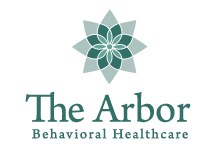Oxycodone is one of the many substances that are either naturally or synthetically derived from the opium plant and thus are classified as an opioid or opiate. The use and abuse of oxycodone and other opiates is growing. Oxycodone is one of the many drugs in this class of painkillers that is prescribed for its analgesic properties. Examples of other opiates are heroin, codeine, morphine, fentanyl, thebaine, darvocet, and many more. Regardless of the name of the particular formulation, all opiates are easily addictive and highly abused substances. Oxycodone is the main ingredient in the now infamous Oxycontin, which is a special formulation of the drug that was supposed to allow extended pain relief for cancer patients and others. It quickly became one of the most abused drugs in the nation and is part of the rise in prescription drug abuse cases all across the country. While the substance is available by prescription in tablet or pill form, it is often crushed and snorted or injected. While most abusers of oxycodone start using it to treat a valid medical concern, such as to treat the pain as part of post-operative pain management, being prescribed the drug does not make the person any “less addicted” if they started using oxycodone or other opiates that are prescribed to them by a doctor. Once someone has progressed to the point that they cannot stop using oxycodone or other opiates they are addicted to the substance and need help to learn to live life again free of addiction to drugs. While many people succumb to prescription drug abuse, the need to keep obtaining the opiate often leads them to live lives of crime as an outcast from society as their dependency grows. Oxycodone addiction is a condition that afflicts the nervous system as a result of prolonged use of this opiate. Opiates are terribly addictive and are substances that can be obtained both legally and illegally. Regardless of how opiates are obtained, the more that they are used causes the body to develop a physical dependency on the chemical. Over time the body loses the capability to manufacturer its own natural painkiller, endorphins, so that the more opiates a person uses, the more the body adjusts and the more opiate that the abuser must use in order to obtain the same pain relief or feel the same satisfaction. The body becomes so dependent on this highly addictive substance that over time the body needs more and more of the substance at higher doses and more frequently just to survive. This is why that it is so hard to successfully treat oxycodone addiction and addictions to other opiates and why it takes skilled staff at a drug addiction treatment facility that are trained to deal with withdrawal symptoms to be able to safely start the process of becoming free of opiates. Research has shown that in order to be successful in preventing relapse, the oxycodone addict must receive education and treatment for both the physical and the psychological aspects of their addiction to oxycodone. Without treating both aspects, most oxycodone addicts will relapse within two years of treatment of the physical addiction and return to abusing some type of opiate.
